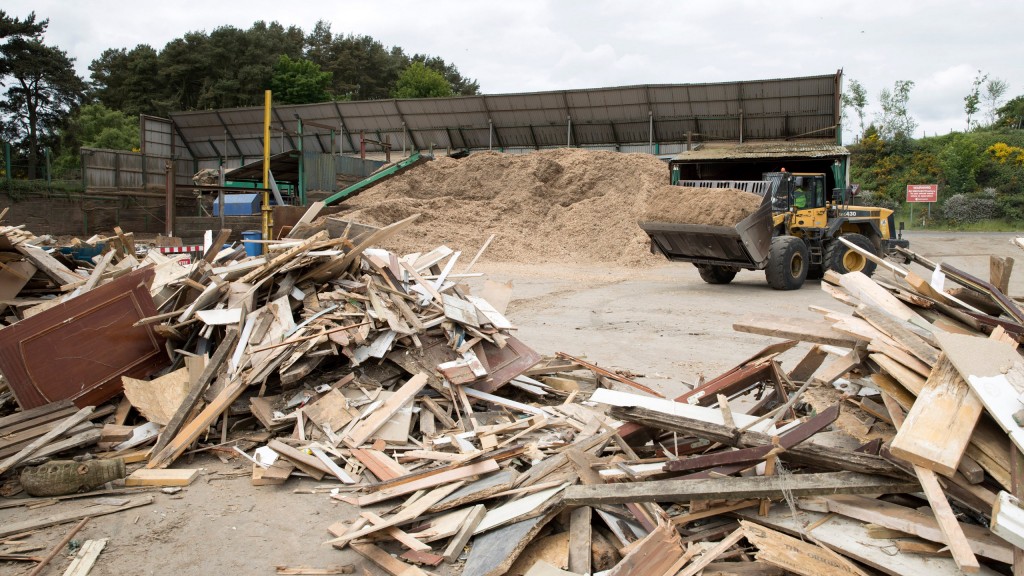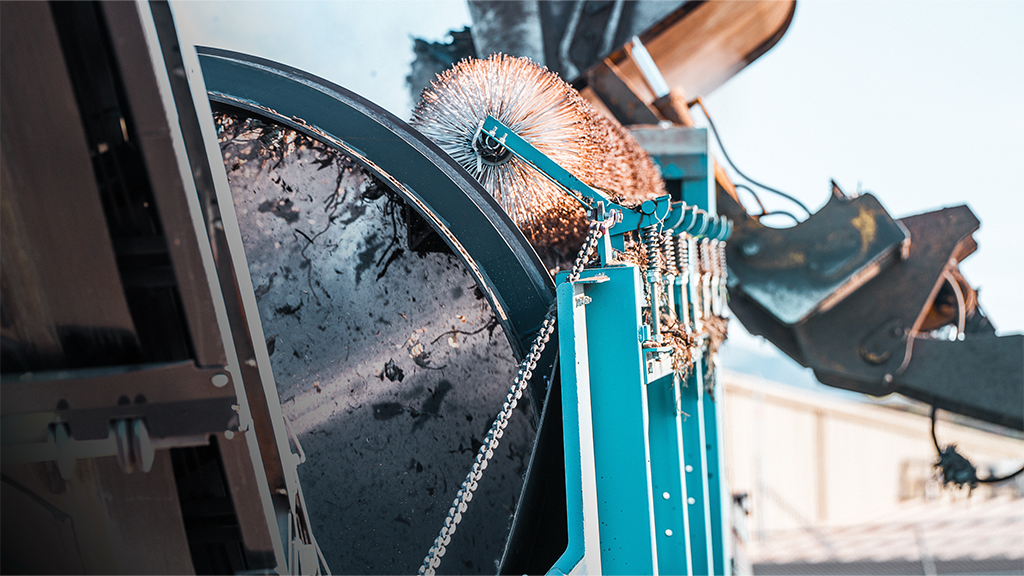Canadian wood recycling sector positions itself for growth
Alberta-based Wood waste recycling business group supports a holistic approach to development

There's a lot more to wood recycling than shredding, screening and grinding. The state of wood recycling continues to evolve, according to Jim Donaldson, CEO of the Alberta-based Canadian Wood Waste Recycling Business Group (CWWR). Practices are well established in the forest industry for converting sawmill residuals into fibre applications such as pulp and paper and waste-to-energy, but overall, the development of wood recycling in Canada is still in its infancy.
According to Donaldson, wood recycling industry infrastructure in Europe is much more advanced. In North America, factors such as the relatively cheap availability of virgin timber and the acceptance of wood by landfills have slowed the momentum for wood recycling industry growth. Interest has continued to grow, however. The increasing corporate pursuit of zero-waste-to-landfill programs has helped, as have sustainability practices emerging in the construction industry to promote recycling. In some regions, including Metro Vancouver, a landfill ban on clean wood instituted on July 1, 2016 has significantly boosted recycling efforts.
Donaldson adds that available statistics related to wood waste recycling in Canada are minimal, which makes the growth of the industry more difficult to track. Natural Resources Canada (NRCan) estimated that unrecovered wood debris in the country's MSW and CR&D waste streams amounts to roughly 1.75 million metric tons annually, or about 7 percent of the unrecovered waste stream, according to a 2013 report.
Changing Perspectives on Wood Recycling
Recent research from the Technical University of Munich supports the idea that the sustainability case for wood is improved through "cascading use." This concept refers to the practice of recovering wood for the next most valuable alternative. Such an approach reduces the carbon footprint impact at each stage of use due to the availability of recycled material, which is much less carbon-intensive to produce. Examples would include lumber which can be reclaimed for reuse or, in the next phase, unusable lumber that can be converted into chips for chipboard. Waste-to-energy is a last resort for wood recycling, yet it remains by far the most popular form of diversion from landfill.
"We are still a throw-away society," Donaldson says. "Tossing reusable material in the grinder makes us feel good that we are recycling and doing the right thing, but it might not be the best choice with respect to making the most money or choosing the ideal option to support sustainability."
The Canadian Wood Waste Recycling Business Group (CWWR) promotes a holistic approach to wood recycling that supports the cascading use model. The organization believes that through the promotion of wood recycling, networking and the sharing of related resources, the sector can better position itself for financial success. In the process, wood waste will increasingly be diverted from landfills.
Focus on Three Core Activities
The CWWRG has identified three core business activities that support the growth of the Canadian wood recycling industry, or bioeconomy. These include the barn wood sector, as well as the remanufacturing and reprocessing industries. In all three sectors, wood is recycled into reusable wood products including new and used lumber, pellets, briquets, animal bedding and landfill cover, or it is used for fire log production. The three sectors are defined as below.
Barn wood: The business of reclaiming used wood into a barn wood inventory retail business platform. Inventory is sold as recycled renewable building products.
Remanufacturing: The business of creating a remanufacturing business platform, using a small portable wood sawmill. This includes sawmilling, kiln drying, planing and/or milling the wood product into an inventory that is sold as recycled, renewable building products.
Reprocessing: The business of creating a small portable reprocessing business platform, using the process of grinding, screening and/or shredding used end-of-life wood, which is sold as recycled wood product for developing reuse markets.According to Donaldson, there are about 80 barn wood business operations in Canada. Typically, these are small businesses. He says any community of 3,000 people or more can support a barn wood business, employing three to four people. Lumber is recovered from old structures, prepared by removing old fasteners, inventoried, priced and then retailed to the public from a storefront location. In some cases, reclaimed lumber is now also being offered by big box retailers at premium prices over new material.
In remanufacturing, portable sawmill units can provide entrepreneurs with the opportunity to resize recovered timber or urban logs for resale.
Cloverdale Fuel
Some operators, such as Langley, B.C.-based Cloverdale Fuel, report seeing an increasing urban waste wood supply. And it is welcome news.
Robby Gill, Cloverdale Fuel's GM, noted that the sawmill businesses that have provided the company's traditional source of material are gradually disappearing in the Metro Vancouver area. Real estate prices have skyrocketed, and land development can be a more attractive option than milling.
"When some of these mills started 60 years ago, their land wasn't worth much," Gill says. "In some cases now, it can be worth $2.5 or $3 million per acre. Today, you would never buy that land to start a mill." Fortunately, increased amounts of urban waste wood from sources such as construction and wood product manufacturing have helped Cloverdale Fuel maintain its throughput.
By hauling bins from construction sites, Cloverdale Fuel can help builders meet their LEED (Leadership in Energy and Environmental Design) certification requirements. Company drivers print pickup receipts in the field to provide builders with proof that their wood residuals are being recycled.
In 2011, Cloverdale Fuel was chosen as the sole wood fibre supplier to an innovative biomass cogeneration project at the University of British Columbia. Known as the Bioenergy Research Demonstration Facility (BRDF), the UBC facility is the first of its kind in North America. Unfortunately, Gill noted, natural gas pricing has impeded the development of more cogeneration projects.
"The low cost of natural gas is inhibiting investment in any new projects," he says. "If you base it on the price of natural gas, today, it doesn't justify cogeneration on a purely economic model."
Chinese import Policy Changes Won't Impact Recycled Wood Fibre Markets
The tightening of contamination tolerances for recycled materials exported to China has severely impacted recycling markets around North America. China recently released its final Environmental Protection Control Standards for Imports of Solid Wastes as Raw Materials (GB 16487.2-13) - the quality standards for imported scrap by China's Ministry of Environmental Protection (MEP). For recycled wood fibre, however, changes in Chinese policy have had only a minor market impact. Chinese wood imports are dominated by virgin chip material. "China only imports chips for the manufacturing of pulp and paper," explains Hakan Ekstrom, Wood Resources International LLC. "Importing recycled wood chips would be too costly."
Virgin chips by contrast are the third most important category of timber imported to China, valued at $1.8 billion in 2016, following logs and sawn wood. Chips are sourced predominantly from tree plantations in Vietnam and Australia.
Cloverdale Fuel's Robby Gill reports that his company has been approached by Japanese and Chinese buyers, but says recycled fibre for the Chinese market has not yet generated significant interest. Gill says Asian buyers are looking for a product "that looks a particular way" and that recycled product does not have the ‘bright white look' that is being sought after. In the future, however, the scarcity of virgin material might lead such buyers to take a closer look at recycled chips. "It's coming," Gill says.
The same could be said for wood recycling in general.
Rick LeBlanc blogs about packaging reuse and recycling, including wood packaging, at www.packagingrevolution.net. He is the editor of Western Pallet Magazine and Reusable Packaging News. This article was submitted on behalf of the Canadian Wood Waste Recycling Business Group, and was first published in Recycling Product News, March 2018, Volume 26, Number 2.



